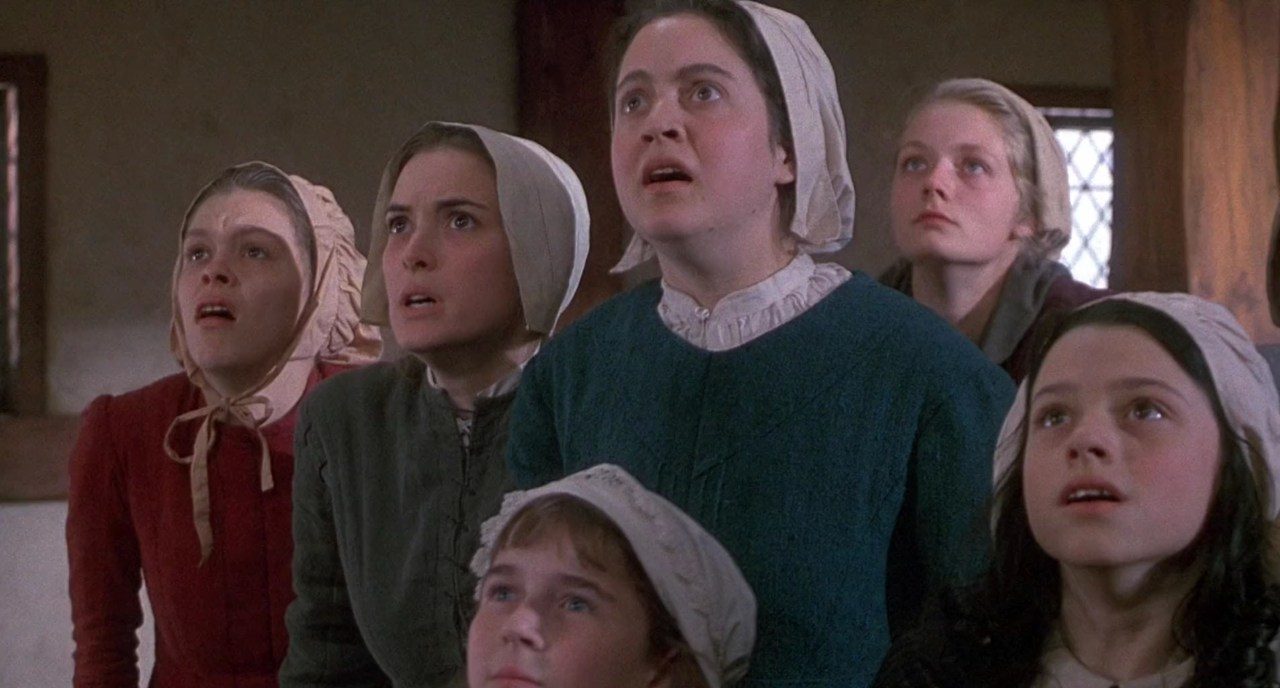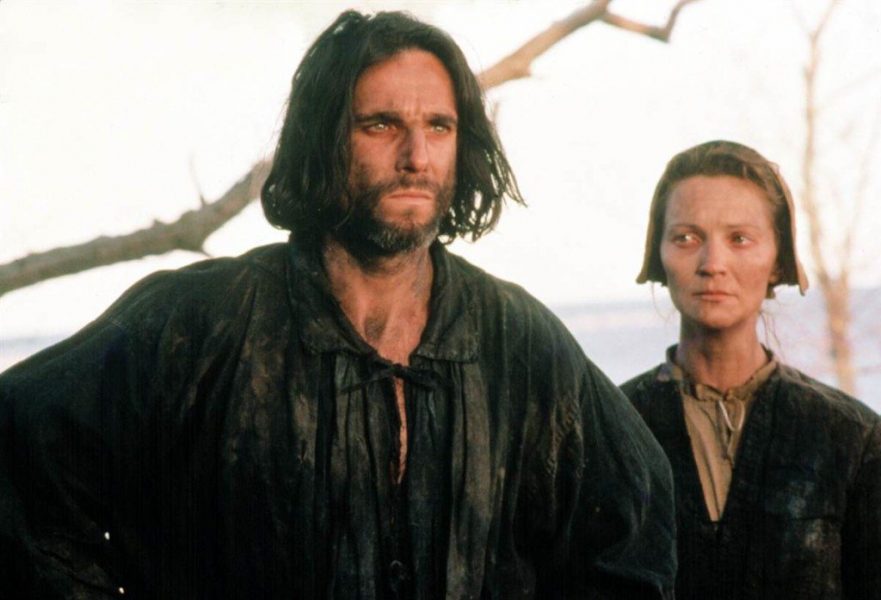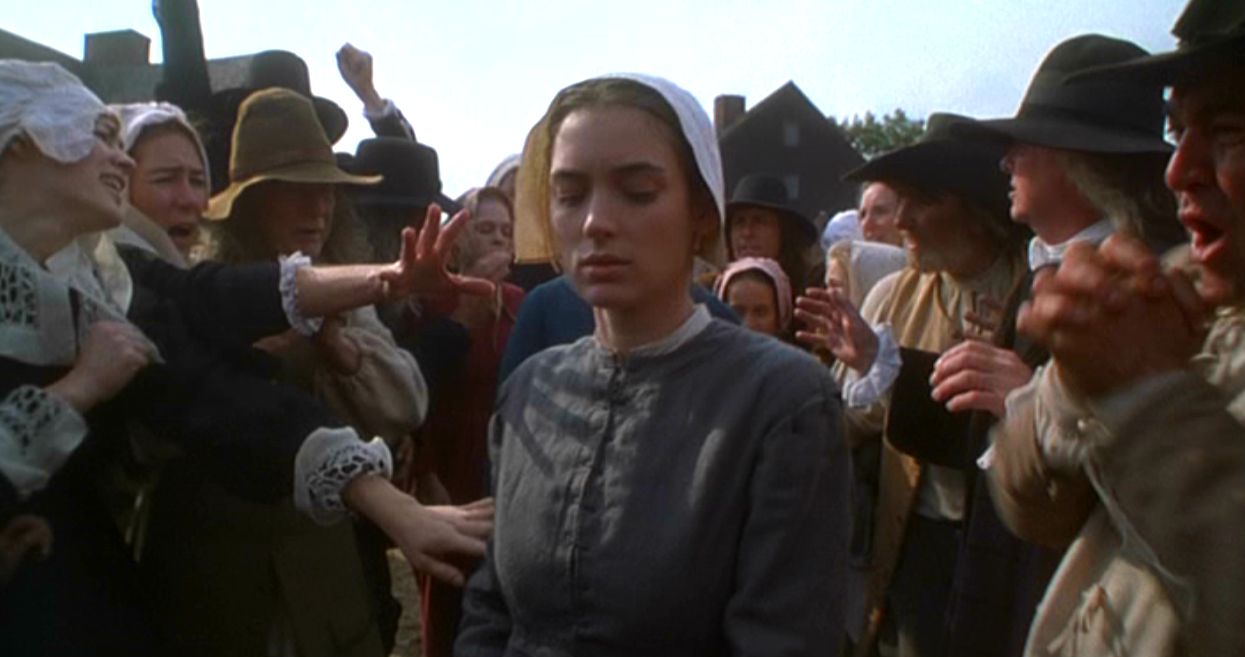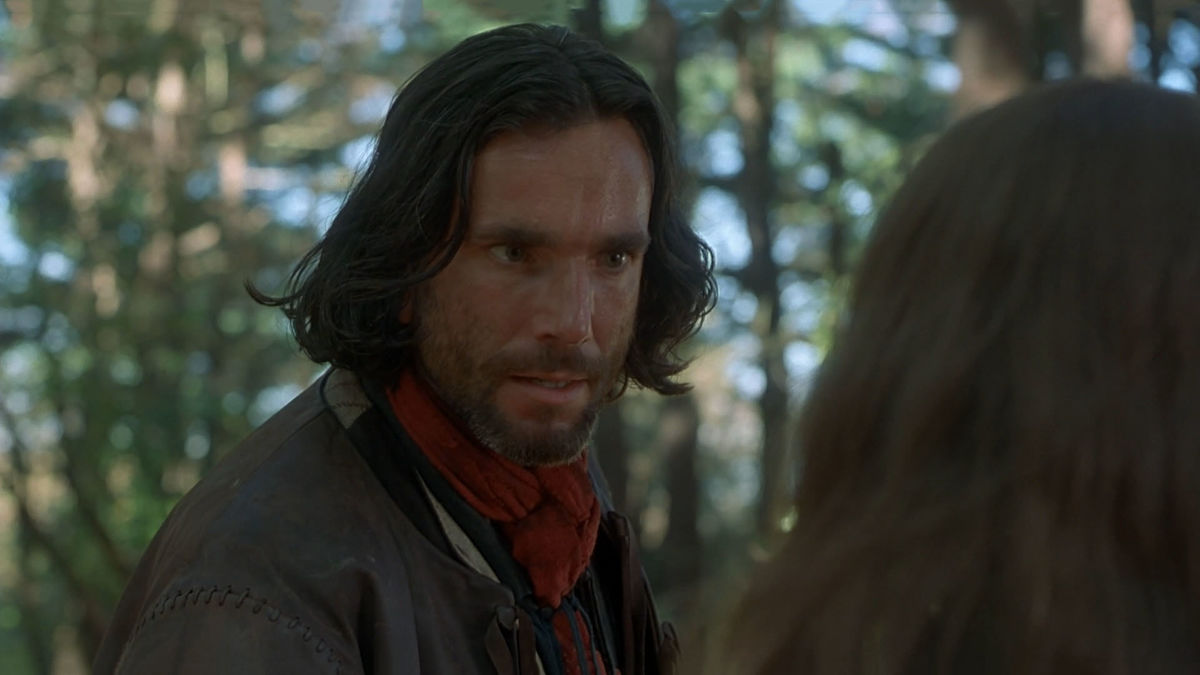Set in 1692 in Salem, Massachusetts, ‘The Crucible’ is a drama film that revolves around Abigail Williams and a group of girls who start accusing other women in the town of practicing witchcraft after they themselves are caught performing strange rituals in the middle of the night. However, John Proctor – whose wife, Elizabeth, has been labeled a witch – believes that Abigail is lying because he refused to reciprocate her feelings for him. Now, she seeks revenge and to get his wife out of the way, for the penalty for witchcraft is death.
Directed by Nicholas Hytner, the 1996 film features Daniel-Day Lewis, Winona Ryder, Paul Scofield, Frances Conroy, Joan Allen, and Bruce Davidson. The film is a depiction of how lies can completely ruin a person’s life, as well as the peace of an entire community. Owing to the compelling performances and narrative, many of you must be wondering if it’s based on real events. Well, let’s dive in and find out!
Arthur Miller’s Adaptation Blends Fact with Fiction
Yes, ‘The Crucible’ is based on a true story. However, it is a slightly fictionalized version of events. The screenplay for the film has been adapted by Arthur Miller from his eponymous play, which he wrote in 1953. The play, in turn, is based on the Salem Witch Trials and the people who have been recorded in history to have had a hand in it.

The Salem Witch Trials were a heinous affair that took place in Salem, Massachusetts, in the late 1600s. Close to 150 people, both men and women, were accused of witchcraft by young girls, who were barely between the ages of 11 and 19. Each of these people was put on trial and cross-examined. Out of these, nearly 30 were found guilty solely on the testimony of others who claimed to have seen them with “the devil.” Over half of the convicted were executed, and the rest were sent to various prisons.
‘The Crucible’ isn’t in any way difficult to understand; what you see on the screen is all that’s going on. There is no mystery as to who the real culprit is, who’s actually speaking the truth, etc. Not for the audience, at least. It’s quite a different story for the characters themselves, though, many of whom are to be put on trial for practicing witchcraft.
However, certain details about the actual events and the people involved have been changed by Miller to fit with the times or simply to put their actions in neat little boxes. For example, the age of Abigail Williams (Wynona Ryder) has been increased to 17. The real-life Abigail, one of the prime accusers in the original trials, was around 11 or 12 years of age. This change was likely made to accommodate another one, that of an affair between John Proctor (Daniel-Day Lewis) and Abigail.
John Proctor, who in reality was almost 60, is depicted as younger in both the play and the film; again, most likely done to show the viability of the forbidden romance between the two that Abigail tries to push for after a brief moment of intimacy between them. This also gives the young girl a solid motive to concoct her lies, whereas the real-life Abigail likely did it to cause mischief. This is mere speculation, of course, as there are no recorded accounts of her thoughts behind the accusations in history.

Arthur Miller was inspired to pen ‘The Crucible’ by the events that unfolded around him in the 1950s. He wrote it as an allegory and in condemnation of McCarthyism, also known as the second Red Scare. “When I was writing ‘The Crucible’ I was writing it because I was being surrounded by a feverish flood of accusations,” said Miller. Arthur Miller himself was convicted of contempt of Congress in 1957. The author had refused to answer questions about people who had been suspected of having ties to communism in front of the House Committee on Un-American Activities.
The mass hysteria that was part of the second Red Scare, with neighbor turning on neighbor, is depicted quite vividly in ‘The Crucible.’ In the beginning, there is simply Abigail trying to get rid of a romantic rival, but soon other girls join in and start pointing fingers at people they don’t have the most agreeable relationship with. Speaking about Abigail in a Making Of video, Winona Ryder said, “In her mind which was, I think, going crazy at that time – I think everything she did was completely justified [in Abigail’s mind] and she was trying to get him [John Proctor] back.”
Given the fact that most of the accusers in the Salem Witch Trials were children, Daniel-Day Lewis, in a conversation with Arthur Miller, discussed what the possible reason for this could be and how they might have done it to avoid punishment themselves. “Bearing in mind the sort of things the children [in the 1600s] were very often subjected to by their parents – I mean from floggings to hangings depending on what it was [their transgression] – but you can understand any opportunity [to avoid punishment],” the actor said. “…I mean, self-preservation is a powerful motivator, isn’t it?”

Regardless of the reasons behind them, the fact still stands that these trials actually took place and caused the death of many innocent people. While based in reality and set over four centuries ago, ‘The Crucible’ has become a cautionary tale for the power that lies hold, especially in the modern age where it is so easy to spread misinformation and rumors through the internet and tabloid journalism.
Read More: Best Historical Drama Movies on Netflix


You must be logged in to post a comment.